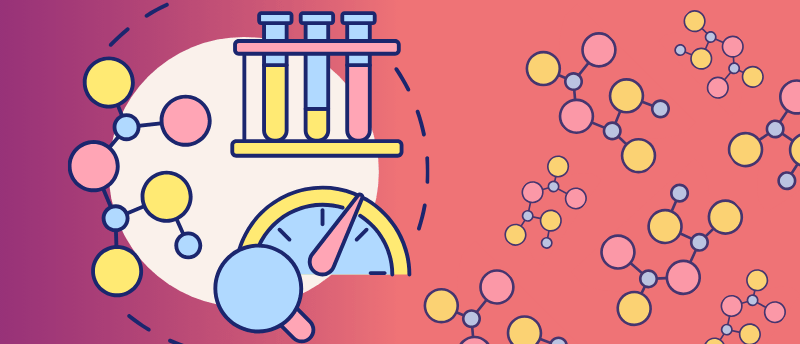The proof is in the proteome: mass spectrometry in drug discovery and beyond

 Matthias Trost (left) is a Professor at Newcastle University (UK) with a lab comprising three focuses: method development for proteomics, the application of mass spectrometry in drug discovery and the study of phagosome biology in macrophages and innate immunity.
Matthias Trost (left) is a Professor at Newcastle University (UK) with a lab comprising three focuses: method development for proteomics, the application of mass spectrometry in drug discovery and the study of phagosome biology in macrophages and innate immunity.
In this interview from ELRIG Research & Innovation (20-21 March 2024; Manchester, UK), we learn more about how Trost and colleagues are using and developing proteomics methods to aid drug discovery efforts.
How have you been utilizing mass spectrometry for drug discovery purposes?
Over 10 years ago, we were working with an enzyme class called deubiquitylases (DUBs); these enzymes are attractive drug targets, but at the time, the only high-throughput assay available utilized ubiquitin with a fluorophore attached. This wasn’t a good substrate for DUBs, so we came up with an assay that utilized diubiquitin probes in an in vitro enzymatic assay where ubiquitin is cleaved by the enzyme. Moreover, diubiquitin has eight different linkage conformations, providing for multiple types of diubiquitin probes.
I think this was a pioneering paper because we used a high-throughput mass spectrometry approach to quantify in vitro DUB enzyme activity, which was a new enzyme class. This approach worked extremely well and led to our using the mass spectrometer as, essentially, an expensive, high-tech plate reader. It’s a very good plate reader because it’s able to measure the mass of the product and the substrate in an enzymatic in vitro reaction. Not only that, but mass spectrometers have become so fast that the newest MALDI mass spectrometers can easily run a 1536 well plate in less than 10 minutes.
MALDI mass spectrometry is also being used in MALDI imaging to visualize biomarkers in specific tissue sections. MALDI imaging provides a fingerprint of the phenotype of the cell, allowing researchers to assess drug efficacy based on whether tumor-cell phenotype reverts to healthy-cell phenotype following drug treatment. It’s similar to the cell painting approach that people use in microscopy. But in our approach, we can get specific biomarker information, and this is a very powerful tool.
What are the advantages of using mass spectrometry?
There are many advantages. One can now achieve high-throughput analysis using mass spectrometry; of course, this has attracted a lot of interest from pharma companies, which very often screen millions of compounds. It’s a fast process with no cleanup required. Another advantage is that mass spectrometry is label-free, allowing researchers to use physiological substrates that can’t be used in fluorescence-based assays. It can handle almost all enzymatic assays and is relatively cheap in the grand scheme of things because although the mass spectrometer costs money, there aren’t many other costs. Additionally, because the sensitivity of the instrument is so great, the amount of sample required is miniscule.
What are the limitations of using mass spectrometry?
Mass spectrometers are rather expensive, and they are updated frequently; so, if you want to stay up to date, you need to buy new instruments regularly. Beyond this point, there aren’t many limitations. Most of the issues arise when a non-mass spectrometry buffer is used, or the enzymatic reaction doesn’t induce a mass shift for some reason. So far in our work, almost every enzyme we have tested in our assays has worked. If your substrate is very large – for example, a big protein – you won’t be able to do the assay by mass spectrometry. You need to stay in a small molecule range somewhere between 100 Dalton and 15,000 Dalton to get the results you’re looking for. If you stay in this mass range, I think there are almost no limitations for in vitro assays.
What is thermal proteome profiling, and how have you been using it in your work?
Thermal proteome profiling – sometimes referred to as cellular thermal shift assay – is based on the idea that increasing the temperature will eventually cause a protein to denature and precipitate. However, drug–protein binding stabilizes the protein, making it more thermally stable with a higher thermal threshold for denaturation.
In the last few years, we have used this principle in an academic setting to identify off-targets of known drugs. For example, often there are five drugs that target the same enzyme on the market, but clinicians believe that one is better than the other four. We don’t understand why because they’re all supposedly hitting the same target.
In many cases like this, we used thermal proteome profiling to discover that those drugs were more effective because they had an additional off-target benefit. In this respect, polypharmacology can sometimes be beneficial, which is an important concept for the pharma industry to understand.
How do you use proteomic tools to investigate other areas, such as innate immunity?
To make the most of our proteomic tools, we collaborate with many people working in different fields. We now conduct classic cell biology experiments, asking questions like how do proteomes shift under certain conditions? In my lab, we focus on inflammatory conditions, investigating what happens to macrophage and subcellular proteomes. This is where our phagosome work comes in; proteomics is an incredibly powerful tool to get an unbiased look at what is happening in a cell or an organ.
The great news is that proteomics is still developing and becoming more and more sensitive. With the new generation of instruments, we can do single-cell proteomics, which looks very promising. But for us, what is particularly interesting is our collaboration with clinicians and lab scientists who are working with small cell samples from specific organs. From these small samples of only 500 cells, we can get very deep proteomes that can reveal disease links.
How do you see proteomics techniques evolving over the next few years to further support drug development?
The instruments that are being built are incredibly sensitive, now on the level of single molecule analysis in mass spectrometry. We are also seeing developments in software, allowing for better, faster data analysis and, therefore, facilitating the running of larger experiments.
Additionally, I believe that AI and neural networks will be used much more. They’re already starting to be used in drug discovery. Because we are getting to the point where we can run thousands of samples in a proteomic experiment within days, we can now think about using high-throughput phenotypic assays on drugs using the proteome as the readout. If you integrate AI into this process, we can understand how drugs behave on a cell model and how they affect the proteome. This will help us identify new compounds to further drug discovery efforts.
Do you have any top tips for conducting mass spectrometry experiments?
If you want to do it yourself, you need to think like an analytical chemist. The process is sensitive, and there are many aspects to consider. The instrument needs to be well looked after in proteomics as the liquid chromatography step can often pose an issue.
You also need to look at quantitation, not just identification. Many researchers want to identify as much as possible, but it doesn’t help you if you’re not quantifying these proteomes as well. There is a technology called Data-Independent Acquisition, which is a very powerful new tool that fragments whole windows of the mass spectrum, fragmenting multiple peptides at the same time. This method is much more sensitive and much faster. However, if you are not doing this well enough, you get huge numbers of identifications, but you don’t get enough points across the peak in order to understand what the quantitation is.
Finally, be critical with the data. In proteomics, proteins that generate few peptides can be very difficult to quantify because there are fewer data points associated with those proteins. Therefore, choosing the right follow-up technology or analysis is essential for interpreting your data.
The opinions expressed in this interview are those of the interviewee and do not necessarily reflect the views of BioTechniques or Taylor & Francis Group.